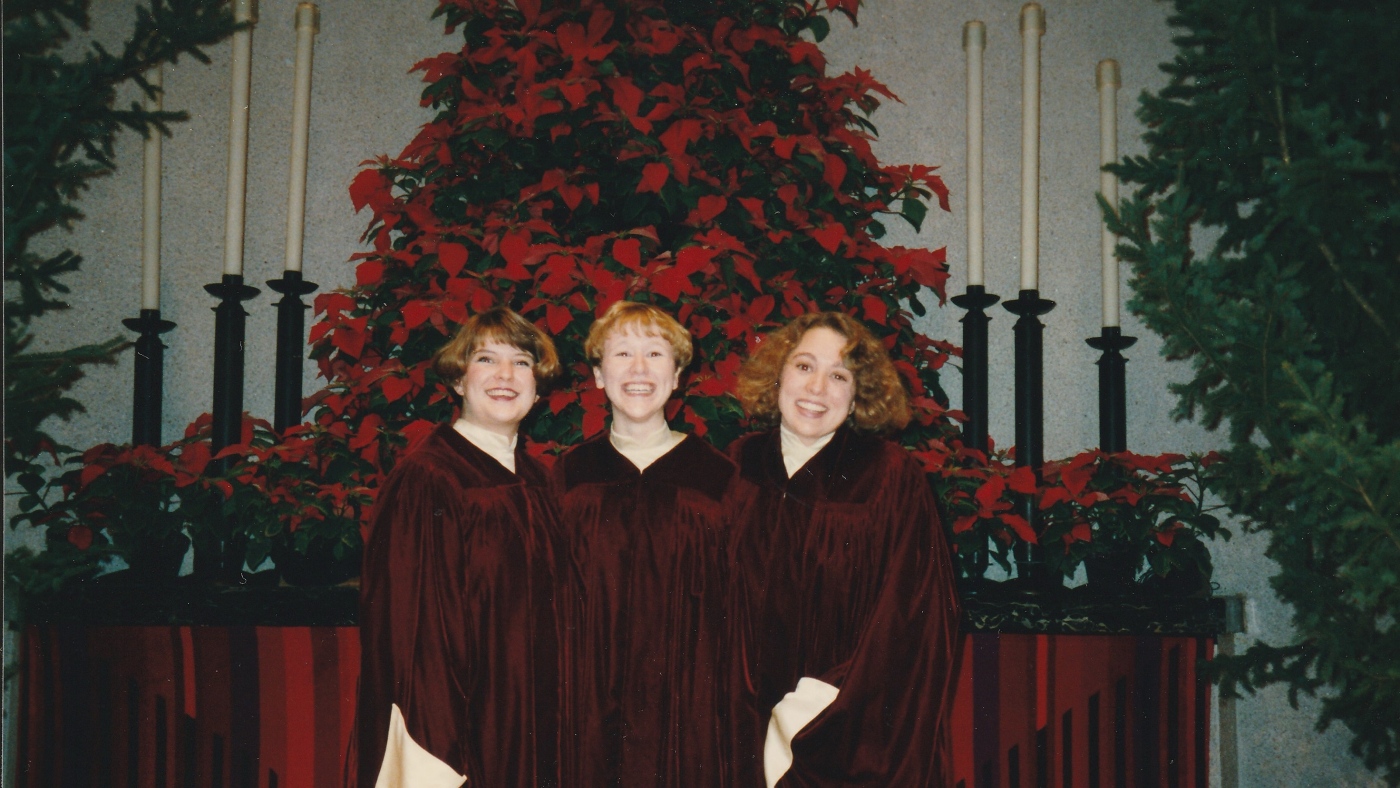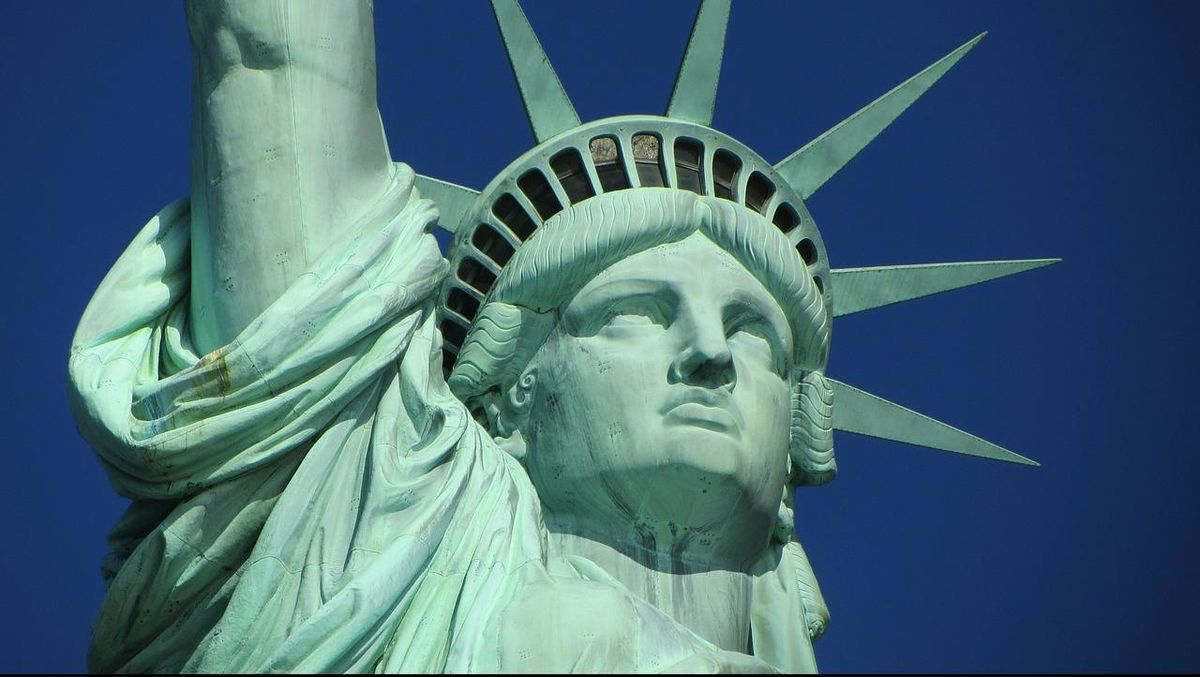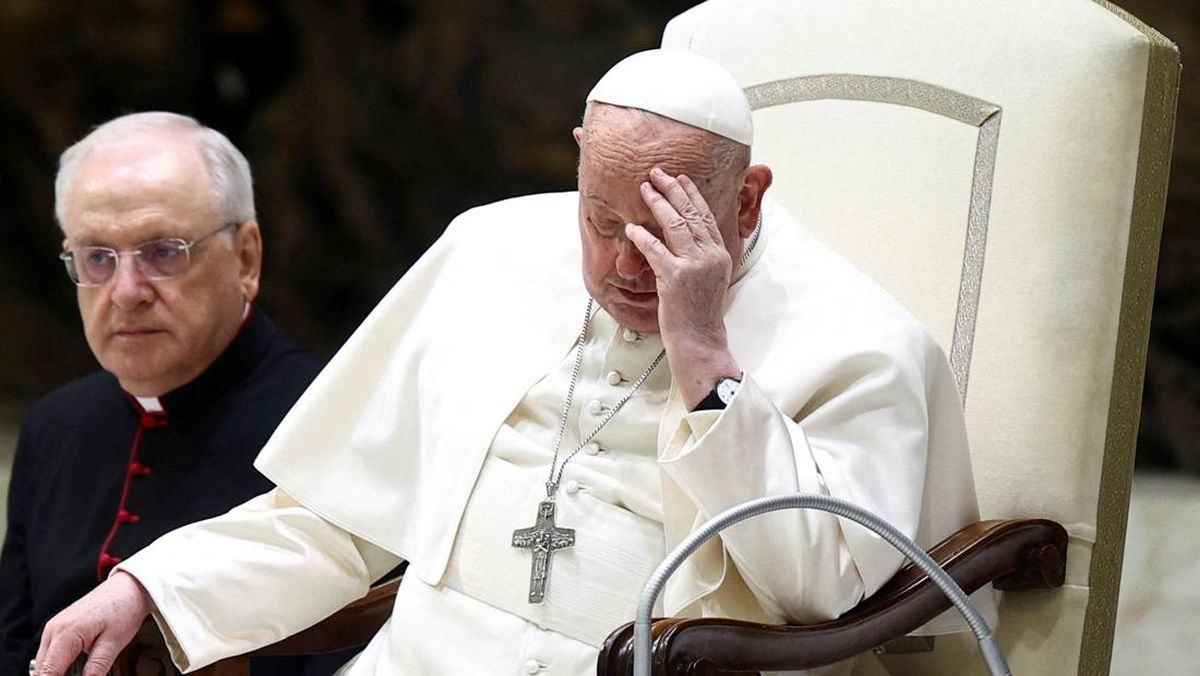
Tracey Malone, executive director of the Sandtown-Winchester Community Collective, stands outside a shuttered recreation center in Baltimore. André Chung for NPR hide caption
toggle caption
André Chung for NPR
Standing outside of a once-bustling recreation center in a West Baltimore neighborhood, Tracey Malone reflected on the community that she grew up in. "Sandtown-Winchester community is a loving community. It is a community where neighbors care for each other, you know each other," Malone, who is now the executive director of the Sandtown-Winchester Community Collective said.
Though brightly colored murals wrap around the retaining walls of the recreation center, the doors are closed. The city closed the recreation center in 2021, leaving the neighborhood's young people with few places to go. "I grew up here. I grew up in Lillian Jones Rec Center," Malone said. "My mom still owns a home here, and my brother was murdered in the same community. And I am here giving back to this community, because he was a kid that gave back."

Baltimore City Councilman James Torrence, who represents Sandtown-Winchester, walks by a neighborhood mural. André Chung for NPR hide caption
toggle caption
André Chung for NPR
Sandtown was once a thriving locus of Black cultural life in Baltimore, but over the years, fell into disrepair and decline. For some who are invested in the neighborhood, as Malone is, the still-shuttered recreation center has become a visible symbol of persistent challenges. And the rec center's future is a sign of what the future of Sandtown could look like.
"Where's the hope? Ten years later, we're still standing here," said Malone. "And where's the hope? Where's the change?"

Protestors rally after a march for Freddie Gray that ended in front of the Baltimore Police Department's Western District police station in Baltimore on April 21, 2015. Gray, 25, died from spinal injuries on April 19, one week after being taken into police custody. Drew Angerer/Getty Images hide caption
toggle caption
Drew Angerer/Getty Images
Ten years ago this month, the death of 25-year-old Freddie Gray put the neighborhood of Sandtown-Winchester in the national spotlight. But Sandtown's struggle long predates Gray's arrest and death.
Gray was arrested in April 2015 in the Gilmor Homes public housing complex in Sandtown, and placed in the back of a police van. While he was being transported by Baltimore police officers, he suffered a severe neck injury. Gray died in a hospital a week later.
Following his funeral, unrest broke out with protests across majority-Black West Baltimore that later spilled into other parts of the city. Some involved violence and destruction, including the burning of a CVS store in Sandtown – in images seen around the country.

Baltimore Police stand outside a CVS that was looted and burned during violent protests following the funeral of Freddie Gray in Baltimore on April 27, 2015. Chip Somodevilla/Getty Images hide caption
toggle caption
Chip Somodevilla/Getty Images
"Freddie Gray was just the lighting of the fuse that blew up the cage," said Pastor Duane Simmons. He leads Simmons Memorial Baptist Church in Sandtown.
Outside Simmons Memorial, people line up to receive food aid, handed out from a van parked alongside the building. Inside, the church is no-frills. There are visible holes in the floors and walls inside the church's central office.
"We deal with over a thousand people who have an addiction problem. We feed about 4 to 600 people a week. With no money. Because here at Simmons Memorial, we believe that need should be the driving force of your ministry, not surplus" the pastor said.
Simmons has been leading this church for decades, since 1990. And in 2015, when Freddie Gray's death sparked the uprising in Sandtown and across the city of Baltimore, he says the church provided resources, and safe haven. "Three and a half weeks. We never closed. 24 hours. It was the safest spot in which to be because not a glass was broken on this church," he said. "We were present. Helping, lifting, encouraging."

Simmons Memorial Baptist Church distributes food to residents. In 2015, the church provided resources, and safe haven when Freddie Gray's death sparked the uprising in the neighborhood. André Chung for NPR hide caption
toggle caption
André Chung for NPR
After Gray's death and the unrest that followed, political leaders visited Sandtown and made promises of investment and sweeping change. Then-mayor Stephanie Rawlings-Blake promised $4.2 million dollars for programming for young people. There was a program launched by the mayor and Maryland's governor at the time, Larry Hogan, to demolish vacant buildings and rebuild blighted blocks.
But Simmons, and others, say many promises never materialized — and that after ten years there's waning attention. "The politicians that represent this community are never here. They rub shoulders with the aristocrats, but barely speak to the proletariat."
Some change did come to Sandtown and to Baltimore. The Department of Justice investigated the city's police department — finding that it disproportionately targeted Black people for stops and arrests, among other things. The city entered a consent decree in 2017 to address those issues. That same year, the city, in partnership with private donors, introduced a renovated Western District police station to serve the community.
There have been setbacks in Sandtown, too. "We had a young lady who was murdered in front of this rec center," Baltimore City Councilman James Torrence said in an interview outside the still-shuttered rec center. "The young people were unable to return because once we shut down the rec to figure out how we can do trauma-informed response to having them come back, someone stole the pipes and wiring."

City Councilman James Torrence says input from Sandtown residents is the reason that, for now, plans are on track to bring the rec center back. André Chung for NPR hide caption
toggle caption
André Chung for NPR
Torrence said that there's still a lot of need in Sandtown, and that part of his job is showing members of this community that their government can meet their needs.
And the input from Sandtown, Torrence said, is the reason that, for now, plans are on track to bring the rec center back. "People think they're left behind. So the apathy for people is high, but it's also getting the trust so that they come back out and trust us," he said. "The fact that they were a little scared when we told them, tell us what you want for your rec center. They're like, What's the budget? Dream is what the budget is, and then we'll figure it out."
He said the city hopes to start building a $26 million new facility by 2027. "There's been a consistent voice among the black women leading this movement in this neighborhood that we want this thing and this is how we want it. And when I say they leave no room without a commitment. Every time I met with them, a commitment was made and it had to be followed through. And I think that the next thing is about the follow through."

Tracey Malone hopes the new rec center can be a resource for children in the neighborhood. André Chung for NPR hide caption
toggle caption
André Chung for NPR
Activist Tracey Malone hopes that a new rec center can create the same connections for a new generation of young people in Sandtown that she found decades ago.
"This community still needs to heal. And how do we heal besides coming together," she asked. "We are creating hope here in Sandtown. Regardless of all the money that came, that did not stay here in Sandtown, Sandtown still thrives."

 2 months ago
33
2 months ago
33


















































